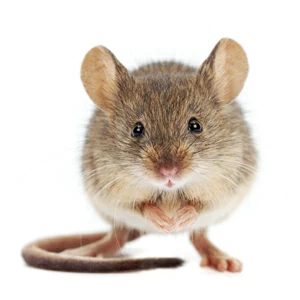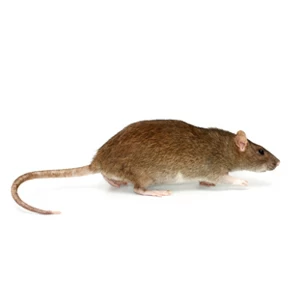


Bugging
You?
Rodents
Rodents occupying your living space are more than just a nuisance. They cause damage to property by penetrating the outside of your structure and can even gnaw through electrical wires causing significant concerns for the homeowner’s safety. However, more importantly, they can contaminate stored food and are disease carriers spreading diseases like the plague, typhus, salmonellosis, rat-bite fever, and hantavirus.
Rodent control can be complex, and a multi-tiered approach must be applied to eradicate the problem. Your Apex mice and rodent control technician will inspect your structure to identify the level of infestation, suggest or implement corrective action plans, and place the proper control measures to eliminate your problem fast. Call Apex today and take back your home with our rodent control services.
Rodent Identification
Stopping a pest problem before it becomes an infestation is important, especially when it comes to rodents. The first step to ending a pest problem is identification. The house mouse, deer mouse and Norway rat are common rodent pests you may encounter.

House Mouse
Identification Tips:
- Color: Brownish to dark gray above with lighter gray or cream color underneath (never white)
- Legs: 4
- Size: Approximately 2 1/2 – 3 1/2 inches with tail length of 2 3/4 – 4 inches
- Identifying Characteristics: Moderately large ears; short, broad feet; small eyes; nearly hairless tail; pointed muzzle
Characteristics of this insect:
- Droppings average 1/4 inch in size, are rod-shaped, and with pointed ends. Fresh droppings are dark and soft, while older droppings may be dull and rigid. Can average about 50 droppings per day
- Prolific breeders. Under ideal conditions, each female house mouse may produce as many as ten liters (about 50 young) in a year. They are sexually mature in a little over a month.
- Mice are very social but are territorial. They can show aggression to those that enter their territory.
- Have a poor vision and are colorblind. They have a keen sense of smell, taste, touch, and hearing and a great sense of balance.
- The house mouse searches for food high in fat and protein. This includes lard, butter, nuts, bacon, meats, sweets, and chocolate. Mice get most of their water from the food they consume but will drink if water is readily available.
- Other attributes: excellent jumpers; can run up walls if the surface is rough; can squeeze into openings ¼ inch in size; capable swimmers; can survive a constant 23 degrees Fahrenheit for ten generations.
- One pair of mice can eat 4 pounds of food, deposit about 18,000 droppings, and void about 12 ounces of urine over six months. They contaminate ten times the amount of food compared to what they eat.

Deer Mouse
Identification Tips:
- Color: Pale grayish-buff to reddish brown above and white underneath
- Legs: 4
- Size:2 3/4 to 4 inches with a tail length of 2 to 5 inches
- Identifying Characteristics: In comparison to the house mouse, deer mice have more enormous eyes and ears, are deemed to be better-looking, and lack the mousy odor
Characteristics of this insect:
- Droppings, averaging 1/4 inch in size, are rod-shaped and have pointed ends. Fresh droppings are dark and soft, while older droppings may be dull and rigid. Can average about 50 droppings per day
- The female deer mouse can produce 2 to 4 liters or more per year, with 3 to 5 per litter
- Mice are very social but are territorial. They can show aggression to those that enter their territory. They will travel over their part daily, no more than 30 feet from their nesting site. They do not fear new objects in their environment and will explore their curiosity.
- Have a poor vision and are colorblind. They have a keen sense of smell, taste, touch, and hearing and a great sense of balance.
- Mice get most of their water from the food they consume but will drink if water is readily available. The deer mouse prefers seeds, nuts, acorns, fruits, insects, insect larvae, fungi, and possibly some green vegetation.
- Other attributes: excellent jumpers; can run up walls if the surface is rough; can squeeze into openings ¼ inch in size; capable swimmers; can survive a constant 23 degrees Fahrenheit for ten generations.
- One pair of mice can eat 4 pounds of food, deposit about 18,000 droppings, and void about 12 ounces of urine over six months. They contaminate ten times the amount of food compared to what they eat.

Norway Rat
Identification Tips:
- Color: Fur is coarse and shaggy, with mainly brown hair and some scattered black hairs
- Legs: 4
- Size: Adults measure 7 to 9 inches in length, with a 6 to 8-inch tail
- Identifying Characteristics: Possess small eyes and ears; blunt muzzle
Characteristics of this insect:
- Droppings average 3/4 inch in size, are capsule-shaped, and have one blunt end. Fresh droppings are black or nearly black. They may look wet and have the texture of putty. Older droppings may become dry, complex, and appear dull. Can average about 30-180 droppings per day and three oz. of urine
- Prolific breeders. Under ideal conditions, each female rat may produce as many as 3 to 6 liters (about 20 young) in a year. They are sexually mature in 2 to 5 months. The female rat lives longer than the male rat, with an average life span between 6 and 12 months.
- Rats are social animals and live in colonies. They are territorial and have a “pecking order” of dominance. Rats are aggressive and will vigorously defend territory and young. Rats commonly travel 100 to 150 feet from their nests, looking for food and water and patrolling their territory. They are neophobic and wary of anything new in their environment. New objects will be avoided until they become familiar with them.
- Have a poor vision. They have a keen sense of smell, taste, touch, and hearing and a great sense of balance.
- Rats prefer protein-based foods. This includes meat, fish, insects, pet foods, nuts, grain, and household garbage. Rats need water every day. Rats need 1/2 to 1 fluid ounce per day, although this amount will vary depending on the moisture content of their food.
- Other attributes: can jump three ft. straight up or four ft. horizontally; climb inside pipes 1 1/2 to 4 inches in diameter; gnaw constantly; swim 1/2 mile in open water, tread water for three days, swim against a strong current in a sewer line, and dive through a sewer trap to come up inside your toilet; can fall 50 feet and survive.
- Rats are estimated to destroy 20% of the world’s food supply annually through direct feeding or indirect contamination.
